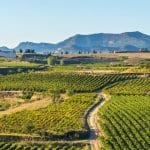A Complete Guide to Spanish Wine Labels and Essential Terminology Glossary
By: Nicole Indovino / Last updated: August 5, 2024
How To Read a Spanish Wine Label
Spain has so many incredible and diverse wine regions, from the cool climate of Rías Baixas to Jerez’s hot, sandy soils. Within Spain’s regions exist different sub-regions, wine classifications, distinct grape varietals, and more. That’s why understanding Spanish wine labels is important when selecting the wine you want, whether you’re at home in your favorite wine shop or visiting. This article will decode all the information on Spanish wine labels and help you understand the key terminology.
Discover More About Spanish Wine
In This Guide
Decoding Spanish Wine Labels
Front Label
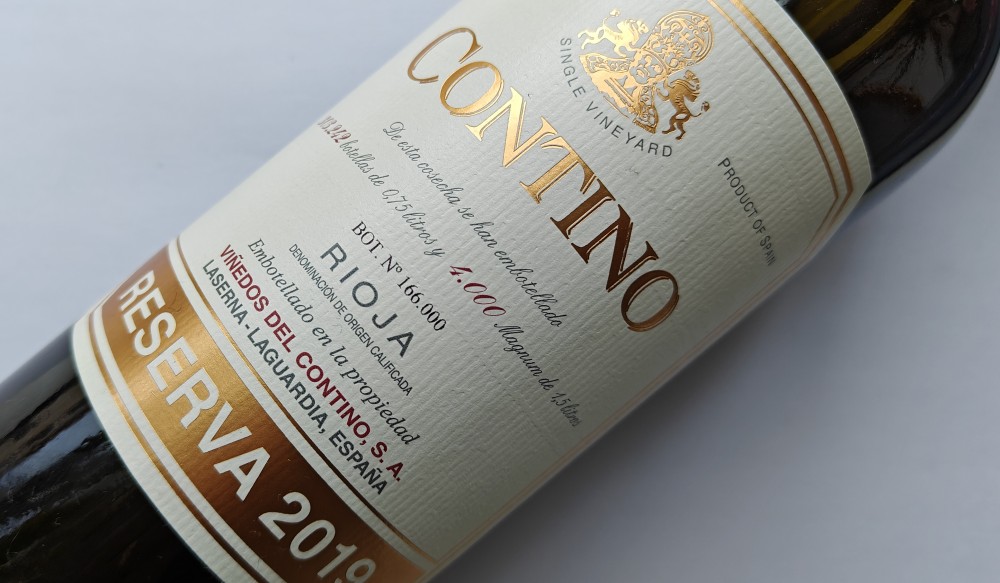
Name of Wine
Sometimes, you will find a specific name of the wine on the bottle, but other times, you won’t, so don’t worry if the wine has no official name.
Region and Quality
The region will give you a lot of clues about the wine. Like many ‘old world’ winemaking countries, Spain often refers to different wines by the region instead of the grape. So instead of ordering a ‘Tempranillo,’ you might ask for a ‘Rioja’ or ‘Ribera del Duero,’ two regions famous for their Tempranillo. Many areas in Spain have officially designated their winemaking regions as denominaciones de origen (DO) or denominaciones de origen calificada (DOCa), signifying a DO of quality. Understanding which types of Spanish wine you like requires knowing what type of wines these DOs produce. More on this later.
Aging Classifications
In certain DOs, bottles will display specific aging classifications. In short, these terms indicate the aging period of the wine. Wines labeled as Joven require no aging and hit the market within a year or two of their vintage. Roble signifies that the winemaker ages the wine in oak barrels, but only for a short duration. Crianza indicates that the winemaker ages the wine in oak for a minimum of one year. The terms Reserva and Gran Reserva on the labels mean the winemaker ages the wines for much longer durations, between 3-6 years, usually sourcing the fruit from higher quality vineyards.
To learn more about the aging classification system, check out this article.
Vintage (Cosecha)
Vintage indicates the year in which the winemaker harvested the grapes.
Producer
The producer is the winery or brand that makes the wine.
Grape Varietal or Blend
The region is much more important for Spanish wine than the grape variety. Therefore, finding the variety or the blend on the label can be tricky. Often, it is in a smaller font or on the back. While this may seem confusing, there is a method to the madness. The wine regions of Spain vary significantly in their climates and styles. A Garnacha made in Priorat will be very different in style than a Garnacha from Rioja or Sierra de Gredos. So, the label highlights the region rather than the grape.
Back Label
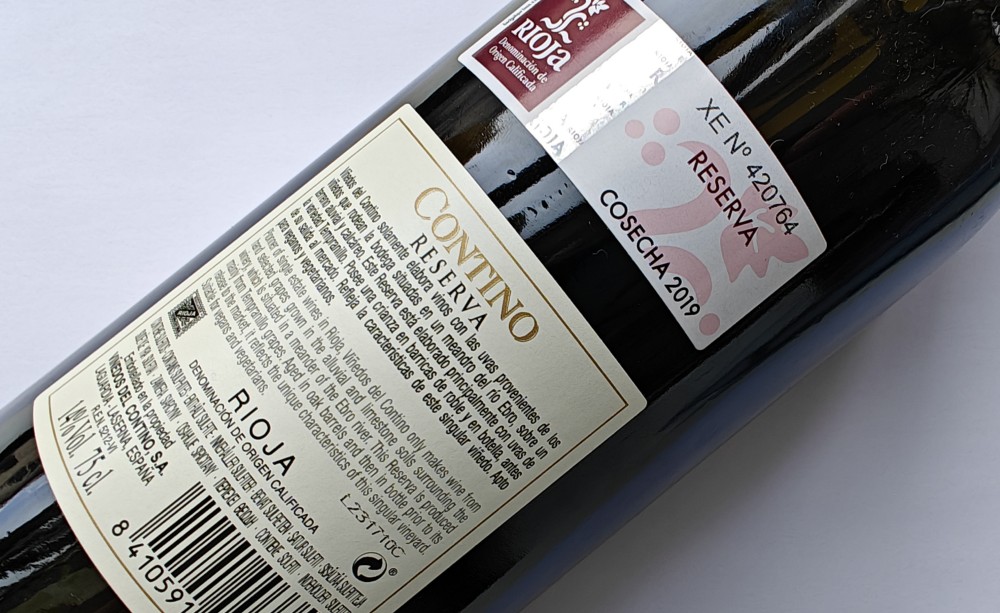
Wine Description
A detailed overview of the wine, often provided in English, encompasses a brief history of the wine and may include the varietals / specific grape varieties used in its production.
Alcohol Percentage
Spanish wine labels always clearly display the alcohol percentage. Typically, wines with high alcohol content (14-15%) are fuller-bodied, while wines with lower alcohol content (11-13%) are lighter and fresher.
Volume
The volume of wine in the bottle, typically 75cl
Consejo Regulador Seal
The Consejo Regulador seal is a mark of quality and authenticity, overseen by regulatory bodies within Spain’s various wine regions. This seal guarantees that the wine meets the stringent standards of the region’s Consejo Regulador, including grape varieties, winemaking practices, and aging requirements. It also ensures traceability and origin via a unique serial number. In recent years (2000 in La Rioja), seals have a holographic security band printed on them.
Sulfites
Sulfites preserve wine’s quality and longevity. According to European Union regulations, any food or beverage containing more than 10 mg per liter of sulfites must indicate this on the label.
Lot number (Lote)
The lot number, often indicated as “Lote,” followed by a number or a series of numbers and letters, is a traceability tool. This identifier is crucial for both producers and consumers, as it provides specific information about the wine’s production batch. By referencing the lot number, one can trace the wine back to details of its production, including when it was made, the specific grapes used, and possibly even the parcel of land those grapes came from.
Navigating Quality Tiers
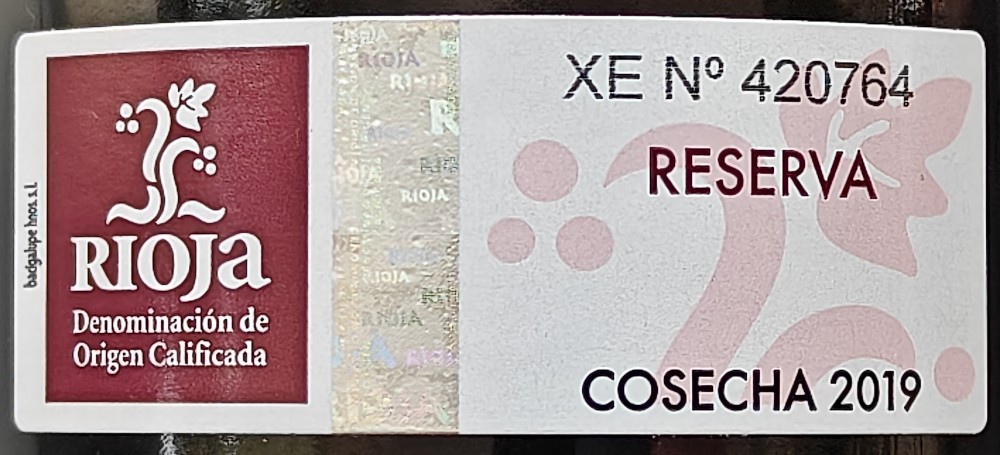
Now that we’ve covered the basics, let’s unpack the different quality classifications in Spain:
Vino de Mesa (VdM): This essentially translates to ‘Table Wine’ and won’t include the grape variety, vintage, or region on the label. Before you write off vinos de mesa, it does not always signify lower quality. Some producers who do not fit the mold in their DO will label their wines as VdM if they don’t fit the specific rules and regulations.
Vino de la Tierra (VdlT): Vinos de la Tierra, wines of the land, is the label used for wines produced in a region that is not officially established or regulated like a DO. These wines offer great value and can sometimes be more creative, as their winemakers are not bound by strict guidelines.
Vino de Calidad con Indicación Geográfica (VCIG): This category is an intermediary between Vino de la Tierra and a wine from an official DO. VCIG wines have more specifications for yield quantities, grape varieties, and winemaking techniques than Vino de la Tierra.
Denominación de Origen (DO): Denominaciones de Origen designate wine-producing areas governed to ensure the quality and representation of the region. They follow specific guidelines for grape growing and winemaking, such as yield limits, barrel aging requirements, and more. There are currently 70 DOs in Spain.
Vinos de Pago (VP): This represents the highest quality level found in Spain. Wineries registered as VP, often called the ‘Grandes Pagos, ‘ produce wines from a single estate deemed a ‘pago,’ with an exceptional vineyard site, microclimate, and winemaking. Wineries within a DO can apply to become ‘pagos’ if they meet specific requirements and demonstrate a superior quality compared to what is generally found in their DO. The Vinos de Pago serves as Spain’s answer to France’s Grand Cru system, allowing truly incredible wineries to operate within their own system. Currently, there are 36 Pagos in Spain.
Denominación de Origen Calificada (DOCa) / (Catalan) Denominación d’Origen Qualificada (DOQ): There are only two DOCa/DOQ in Spain, Rioja and Priorat. These two winemaking regions are DOs but hold higher standards for wine production and have long histories of consistently excellent wine, hence the extra title of ‘qualified.’
Vinos de Autor / Vinos de Garage: Small producers or individual winemakers produce these wines in very small quantities from selected parcels of vineyards, usually only during good vintages.
Exploring Labels By Wine Regions
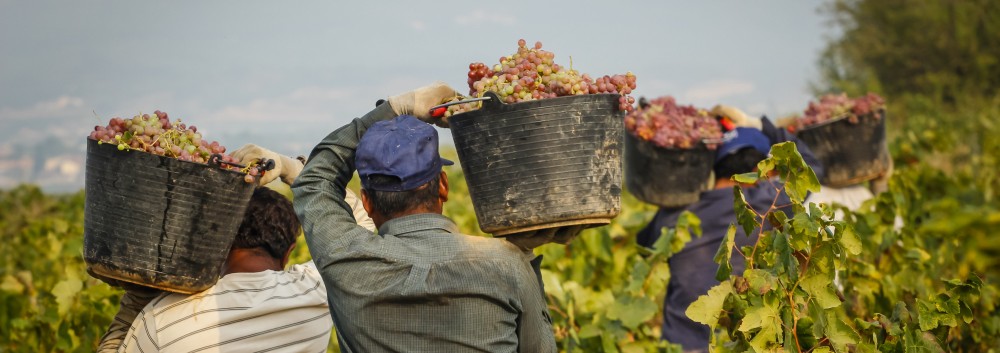
As I mentioned earlier, the region listed on the wine label will give us a lot of clues about the wine. So, let’s explore some of Spain’s top regions so you know what to look for.
La Rioja
Rioja is Spain’s most historic wine region, located along the Ebro River in the northeast of Spain. It is an optimal site for growing red wine varieties, especially Tempranillo, Garnacha, Graciano, and Viura. Rioja earns its reputation through long barrel aging and features an elegant profile of red fruit, delicate acidity, and a savory finish.
Within Rioja, there are sub-regions that you may find on wine labels, like Rioja Alta or Rioja Oriental. While these areas are close to one another, they have slight differences in climate and soil, which impacts the wine. For example, Rioja Alta wines often have more acidity than fuller-bodied Rioja Oriental wines. Read our blog post on Decoding La Rioja classifications and wine types for a more detailed overview.
To learn more, read our guide to the La Rioja Wine Regions.
Priorat
Priorat is located in Catalunya, about two hours west of Barcelona. Its extremely steep, terraced vineyards have very limited yields, resulting in intense, powerful, inky Syrah and Carignan wines with serious aging potential.
Classification unique to Priorat Wine Region:
- DOQ (Denominació d’Origen Qualificada) Priorat: This represents the highest quality level, equivalent to DOCa (Denominación de Origen Calificada) found in regions like Rioja. It denotes wines that adhere to rigorous quality standards and originate from the designated Priorat area. This classification confirms the wine’s authenticity and demonstrates a strict commitment to production methods that guarantee high quality.
- Vi de Vila: This classification marks wines originating from grapes cultivated in a specific village within the Priorat region. It mirrors the Burgundy “village” appellation, emphasizing terroir and local character. Labels often display the village’s name, like “Vi de Vila Gratallops” or “Vi de Vila Porrera,” to spotlight the distinctive qualities the village’s terroir bestows on the wine.
- Vi de Finca: Equivalent to the French “Cru” classification, this signifies a wine originating from a single, recognized vineyard renowned for its exceptional terroir. Expectations hold that these wines will express the unique characteristics of their specific site, demonstrating the highest quality and individuality within the Priorat DOQ.
To learn more, read our guide to the Priorat Wine Region.
Sherry
In Spanish, the term Jerez refers to Sherry, highlighting the incredibly unique wine from this region. Jerez wines age in a solera system that creates distinct oxidative flavors. The solera system is a micro-blending technique for wines from different vintages. Imagine a pyramid of barrels of fortified wine, each level from a different vintage.
The winemaker bottles small amounts from the bottom level each year, then uses wine from the top of the pyramid and down to refill each consecutive level. This process ages a non-vintage blend for a very long time, giving sherry wines their unique, smooth notes of hazelnut, dates, raisins, and caramel.
The names of sherry wines come from their grape varieties, locations, and aging processes. It can be a lot to remember. As a general rule of thumb, Palomino Finos and Manzanillas will have strong, pungent flavors, while Palo Cortados and Amontillados will have sweeter aromas, such as caramel and hazelnut. Pedro Ximinez will taste like a very sweet, liquid dessert.
A Comprehensive Guide to Sherry Wine: Read more
The classifications of Sherry’s unique styles and flavor profiles:
- Fino: A dry, light-bodied Sherry aged under a layer of flor yeast, which prevents oxidation and gives it a distinctive almond-like flavor.
- Manzanilla: A type of Fino Sherry produced in the coastal town of Sanlúcar de Barrameda, known for its slightly salty taste due to its maritime influence.
- Amontillado: Initially aged under flor like a Fino, but then exposed to oxidation, resulting in a Sherry that’s darker than Fino and has a rich nutty flavor.
- Oloroso: Aged without the protection of flor, leading to oxidative aging from the start. Oloroso is richer and darker than Amontillado, with a warm, nutty, and complex flavor.
- Palo Cortado: A rare and complex Sherry that begins its aging process as a Fino or Amontillado but then transitions to oxidative aging like an Oloroso. It combines the delicate bouquet of Amontillado with the body and richness of an Oloroso.
- Pedro Ximénez (PX): A sweet Sherry made from dried Pedro Ximénez grapes, known for its rich, syrupy texture and flavors of dried fruits, molasses, and chocolate.
- Moscatel: Similar to Pedro Ximénez, this is a sweet Sherry made from sun-dried Moscatel grapes, offering flavors of honey, raisins, and citrus.
- Cream Sherry: A sweetened Oloroso, often blended with Pedro Ximénez or Moscatel to increase its sweetness, resulting in a rich, smooth wine.
- Medium and Pale Cream: Variants of sweetened Sherry, lighter than Cream Sherry. Pale Cream is a sweetened Fino, while Medium is based on an Amontillado or Oloroso base.
If you want to dive deeper, check out our guide to the Jerez Wine Region.
Cava (including Brut Nature, Corpinnat, and Classic Penedès)
Cava is a Spanish sparkling wine produced in various regions across Spain. Like Champagne, winemakers produce Cava using the traditional method, but they craft it from a selection of grapes native to its production regions. Navigating Cava labels can be tricky; they have various classifications based on age, quality, and sugar content. For example, Cava Brut Nature is the driest without added sugar and up to 3g/L of natural sugar.
A Comprehensive Guide to Cava Wine: Read more
Here is the complete classification list in order of sweetness
- Brut Nature – Less than 3 grams of sugar per liter. No added sugar.
- Extra Brut – Between 0 to 6 grams of sugar per liter.
- Brut – Up to 12 grams of sugar per liter.
- Extra Seco (Extra Dry) – Between 12 to 17 grams of sugar per liter.
- Seco (Dry) – Between 17 to 32 grams of sugar per liter.
- Semi-Seco (Semi Dry) – Between 32 to 50 grams of sugar per liter.
- Dulce (Sweet) – Over 50 grams of sugar per liter.
Corpinnat and Classic Penedès are two specific Cava labels that producers in the Penedès DO create to further highlight their particular regional characteristics and quality.
Classic Penedès must be made organically, and ancestral grape varieties from the Penedès region must be used, amongst other requirements like aging time.
Corpinnat is an even more distinguished label that highlights a limited number of Cava producers making wines of excellence in the Penedès region with even stricter requirements, such as 18 months of bottle aging, handpicked grapes, and more.
To learn more, read our guide to the Cava Wine Region.
Rueda
Rueda is a DO located in Castilla y Leon and is well known for producing fresh, dry white wines. The most symbolic variety of this region, Verdejo, has beautiful aromatics and a refreshing profile. It can create a rich, full-bodied white when blended with other varieties in the region, like Chardonnay or Viura.
Classifications specific to Rueda:
- Rueda Verdejo: Wines that are at least 85% Verdejo grapes. These wines are known for their aromatic, fresh, and vibrant character.
- Rueda Sauvignon: Made from at least 85% Sauvignon Blanc grapes. These wines showcase the varietal’s typical freshness and acidity.
- Rueda: A broader category that can include wines made from Verdejo, Viura (also known as Macabeo), Sauvignon Blanc, and Palomino grapes. If a wine is simply labeled “Rueda,” it must contain at least 50% Verdejo grapes.
- Rueda Espumoso: Sparkling wines are produced using the traditional method, with no minimum aging requirement. They can be white or rosé.
- Rueda Dorado: A traditional, oxidative style of wine that is aged for a minimum of two years in oak. This results in a golden color and distinctive nutty, complex flavors.
- Gran Vino de Rueda: This is a new category introduced to recognize high-quality wines with greater complexity and potential for aging. These wines must meet stricter criteria, including lower yields and higher minimum alcohol content.
To learn more, read our guide to the Rueda Wine Region.
Spanish Wine Terminology
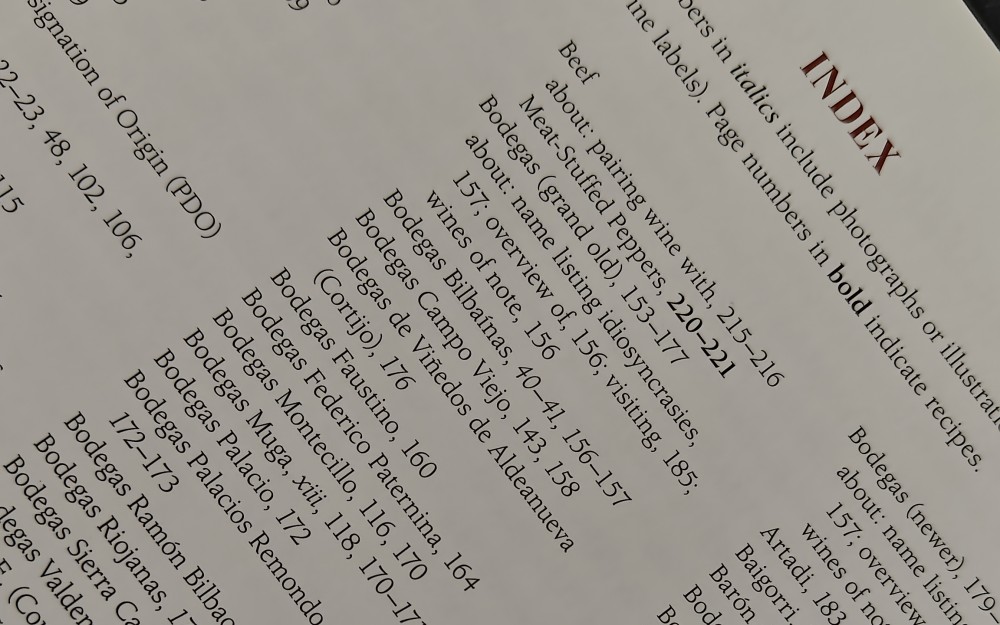
| Acidez | Acidity |
| Aguardiente | A strong transparent spirit distilled from vegetables, called “Firewater,” is drunk as a digestif after a heavy meal to aid digestion. |
| Aromático | Aromatic |
| Albariza | Jerez Sherry country’s famous sparkling white soils are characterized by their high limestone content. |
| Albariño | Fresh, crisp white wine from the Rias Baixas appellation of Galicia. It’s also the name of the primary grape in these elegant wines. |
| Alella | The smallest D.O. in Spain, located just north of Barcelona. Known for fresh, crisp white wines and excellent Cavas. The top names are Carmenet and Marques de Alella. |
| Amargo | Bitter |
| Amontillado | A type of Sherry or Montilla, aged and amber-colored with a nutty flavor |
| Añejo | refers to a wine aged in barrels and/or bottles |
| Asoleo | “sunning” refers to the process of drying grapes in the sun to concentrate their sugars before making wine. |
| Autóctono | Native or indigenous grape varieties |
| Barrica | The classic 225-liter oak barrel used to age wine is made from French or American oak. |
| Barrica Nueva | New barrel. The use of new oak barrels in wine aging. |
| Bodega | Means “Winery,” “Cellar,” and confusingly, even “Wine Bar.” |
| Bodeguero | The winery owner/manager |
| Clarificación | Clarification |
| Capataz | A master wine taster in Sherry country |
| Cava | A sparkling wine, usually from Penedés (with Xarel.lo, Parellada, and Macabeu grapes) made in accordance with the Methode Champenois and aged at least nine months. There is a Gran Reserva qualification for aged Cavas of the Penedés. |
| Cepa | Grape Varietal |
| Clarete | A traditional Spanish wine that’s somewhere between a red and a rosé. |
| Consejo Regulador | Regulating Council that oversees and sets standards for viticulture and winemaking within wine appellations, ensuring quality and origin. |
| Cosecha | Vintage, harvest |
| Deguelle | The disgorging process used for sparkling wines. Called “Degorgement” in French. |
| Dorado | is a fortified wine made in the Rueda region with the Verdejo grape. |
| Dulce | sweet |
| Enologia | Winemaking |
| Envejecimiento en Botella | Bottle aging. |
| Espeso | Heavy (“thick”), weighty wine |
| Espumosa | Sparkling |
| Flor | A layer of yeast that develops on the surface of some sherry wines during aging. |
| Fino | A type of sherry or Montilla, young, salty, tasting of the sea |
| Garnatxa d’Emporda | A sweet dessert wine made in the Ampurdan, Costa Brava (north of Barcelona) |
| Generoso | A fortified aperitif or dessert wine |
| Grado Alcohólico | Alcohol content |
| Jerez de la Frontera | The principal Sherry wine town in southwest Spain in the province of Cádiz. |
| Maduración | Ripening |
| Manzanilla | Manzanilla is a very dry sherry-style wine. It is only from the town of Sanlucar de Barrameda, part of the Sherry Triangle. |
| Moscatel | Sweet dessert wine, excellent Moscatels are made in the Alicante region |
| Mosto | Must, freshly crusted grape juice |
| Oloroso | Dark, rich-aged sherry |
| Orujo | Manzanilla is a very dry sherry-style wine. It is only from the town of Sanlucar de Barrameda, part of the Sherry Triangle. |
| Pacharán | Sloeberry liqueur from Navarra/ Basque country. |
| Pago | single vineyard, Château style estate-bottled wine |
| Parcela | Plot or parcel of land |
| Polifenoles | Polyphenols. These are chemical compounds found in wines, contributing to taste, color, and mouthfeel. |
| Racimo | A cluster of grapes |
| Roble | Oak |
| Sobremaduración | Overripe grapes that are often used to make richer, more concentrated wines. |
| Sobretablas | A term used in sherry production refers to the period when the new wine is aged in barrels before being classified and potentially fortified. |
| Solera system | This is a method of blending and aging wine by periodically replacing a portion of older wine in a barrel with younger wine, ensuring a consistent age and quality over time. |
| Terruño | Terroir |
| Tinto de Verano | A popular Spanish drink made by mixing red wine with carbonated lemonade or soda, it’s a refreshing beverage enjoyed in the summer months. |
| Tonelería | Cooperage – barrel workshop |
| Txakoli/ Txacoli/Chacoli | Basque white wine from Zarautz and Getaria, quite tart and acidic, perfect for coping with vinegary tapas and “pintxos.” |
| Uva | Grape |
| Vendimia | Vintage, harvest |
| Vendimia Seleccionada | Selectively picked by hand, a sign of a high-quality wine. |
| Vendimia Tardía | Late harvest. |
| Vino de Aguja | Naturally slightly sparkling wine, characteristic of some of Galicia’s white wines from Ribeiro. |
| Vino Blanco/ Rosado/ Tinto | White/ Rosé/ Red wine |
| Vino Encabezado | Wine fortified for distillation |
| Viñedos | Vineyards |
| Vinificación | The winemaking process |
| Vino Biológico | Biodynamic wine |
| Vino Ecológico | Organic wine |
| Viticultura | Refers to viticulture, the science, production, and study of grapes. |
En Fin
Decoding Spanish wine labels can seem complicated at first. There are many classifications, indigenous grape varieties, regions, sub-regions, etc. It’s a lot. But once you learn what Spanish wines you like, what regions they come from, or what aging processes they undergo, you know what to look for, and it becomes a fun exploration. Hopefully, this guide inspired you to explore the wonderful world of Spanish wine further. The best way to understand this is to travel to the source and immerse yourself in it, so check out what Cellar Tours offers.
Sources
More information
If you would like us to customize an exclusive luxury tour, contact us and let us know your travel plans. We offer luxury food and wine tours for private groups of a mininium two guests. In addition, all of our private, chauffeured tours are available year-round upon request.

